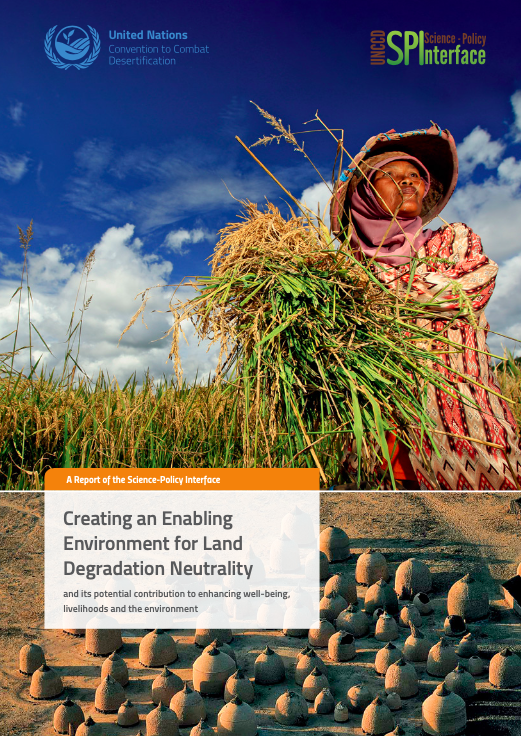Resource information
The Sustainable Development Goals (SDGs) adopted by the United Nations General Assembly in September 2015 include a target on land degradation neutrality (LDN) (SDG 15.3). Attaining and maintaining LDN requires addressing a land governance challenge to steer land management towards avoiding, reducing and reversing land degradation. Uptake of LDN can be catalysed by creating an enabling environment for LDN and by designing and implementing measures that achieve multiple benefits through safeguarding and enhancing well-being and livelihoods of people affected by land degradation while improving a range of environmental conditions. This report provides science-based evidence on the configuration of the enabling environment for LDN and the opportunities for multiple benefits.
Three approaches are used to delineate the evidence base. First, a literature review summarizes contemporary trends in land governance and land markets, and assesses the implications for LDN. Second, a survey among practitioners and experts involved in the LDN process gauges their perceptions and expectations about the enabling environment, multiple benefits and general progress of LDN. Third, a review of LDN Target Setting Programme (TSP) country reports contextualizes the results from the survey. Insights from these sources are triangulated to formulate key messages and policy options. These highlight the multidimensional nature of the LDN enabling environment, which requires enhanced vertical and horizontal integration of institutions and governance mechanisms.
Further, land governance and secure land tenure need to be adapted to local conditions. Evidence highlights the dynamics of land governance and the increasing impacts of global value chains on local land management, providing both challenges and opportunities for LDN implementation. LDN stakeholders have high expectations for multiple well-being and livelihood benefits to be attained through LDN implementation. Evidence indicates that the level of achieved multiple benefits strongly depends on contextual conditions. Therefore, making assessments of the prevailing political, social, economic and cultural dimensions that characterize a target area or country is needed to better align LDN with other national targets.


